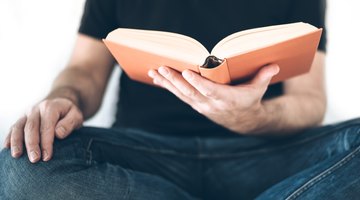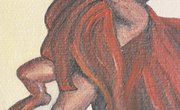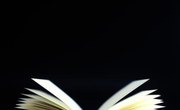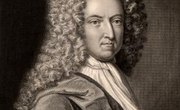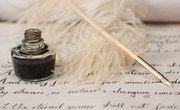Literary critics acknowledge Virginia Woolf, whose first experimental novel, “Jacob’s Room,” appeared the same year as James Joyce’s “Ulysses,” as an inventor of the modernist novel. The modernist novel relied upon the subjective impressions of protagonists to shape the narrative, a method radically different from the stringent objectivism of 19th-century fiction. Woolf employed distinctive narrative techniques, some of them shared with other writers, some wholly her own, to accomplish her novelistic feats.
Narrative Subjectivity
Virginia Woolf idolized Marcel Proust, whose novels sought to capture both the psychological analyses and transformations of his primary characters. Woolf, beginning with “Jacob’s Room” and continuing with works such as “Mrs. Dalloway,” sought to inject her own work with a similar sense of narrative subjectivity. The characters in Woolf’s novels have fluid identities that change as the narrative progresses, reflecting the ways in which people in real life evolve as they mature. Woolf’s narratives thus rely heavily upon the interior monologue, adapted with modernist literary techniques, where she can explore the subjective realm of a character’s memories, thoughts and dreams.
Stream of Consciousness
Woolf shares one of her primary narrative techniques with authors like James Joyce and William Faulkner. "Stream of consciousness" refers to a mode of narrative that follows the line of a character’s thoughts as they occur. Woolf’s particular deployment of stream of consciousness included authorial interjections to guide the reader and shape the narrative. This type of stream of consciousness, called an indirect interior monologue, occurs in the third person. In "To the Lighthouse," when Mr. Ramsay displays “the pleasure of disillusioning his own son and casting ridicule upon his wife, who was ten thousand times better in every way than he was (James thought),” the phrase “James thought” sticks out as an authorial signpost.
Free Indirect Discourse
Free indirect discourse employs the techniques of stream of consciousness narration, but outside the stricture of interior dialogue. Woolf herself explains the benefits of free indirect discourse in an essay on Jane Austen: “She would have trusted less ... to dialogue and more to reflection to give us knowledge of her characters.” Free indirect discourse thus appears as an attempt to capture the impressions that never get direct formulation as thoughts, and allows the author to jump from character to character. Woolf employs this technique extensively in “Mrs. Dalloway,” when she presents multiple characters’ impressions of shared circumstances.
Use of Silence
In addition to stream of consciousness and free indirect discourse, Woolf employs silence to profound effect in her narratives. She creates the impression of silence through the introduction of peripheral, nearly mute characters and the use of parenthetical asides to describe actions. The peripheral characters, such as the poet Carmichael in "To the Lighthouse,” appear as silent images whose thoughts are conveyed through actions, rather than in a stream of consciousness monologue. The use of parentheses offsets the narrative’s silent moments from the general cacophony. This technique expands the effectiveness of Woolf’s narrative in that it forces the reader to formulate his own impressions of the silent imagery.
Related Articles
References
- Istituto di Istruzione Secondaria Superiore John Maynard Keynes: Woolf's Use of Narrative
- Project Muse: The Reading of Silence -- Virginia Woolf in the English Tradition
- University of Alabama in Huntsville: Chronological List of Works by Virginia Woolf
- University of Alabama in Huntsville: Significance of Mr. Carmichael
Writer Bio
Douglas Matus is the travel writer for "West Fort Worth Lifestyle" magazine, and spent four years as the Director of Humanities for a college-prep school in Austin. Since 2005, he has published articles on education, travel and culture in such publications as "Nexus," "People's World" and "USA Today." Matus received an Education Pioneers fellowship in 2010 and an MFA from CalArts in 2011.

